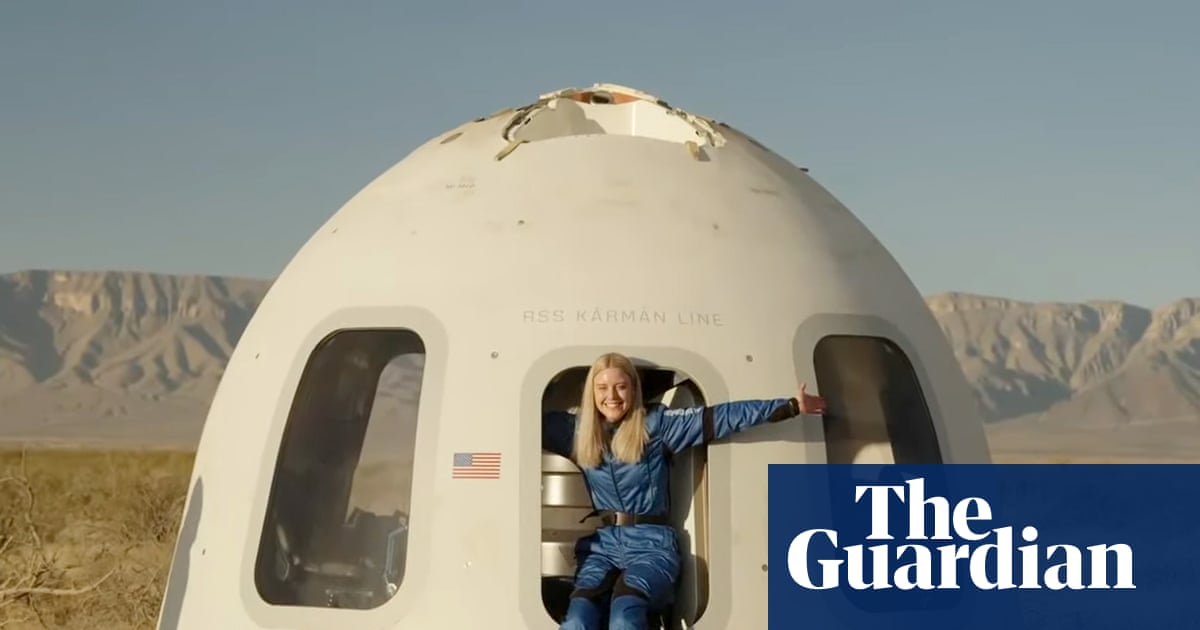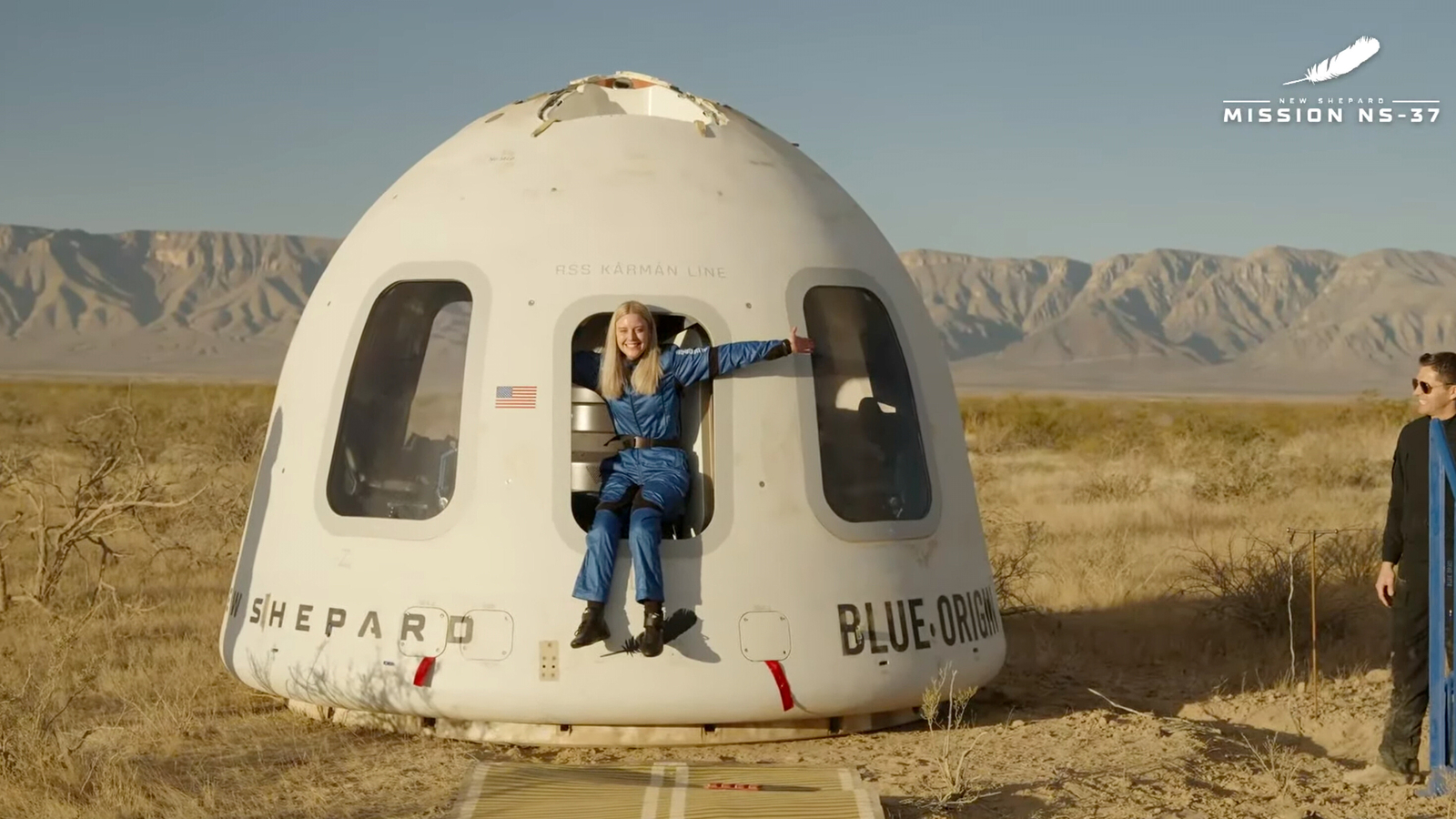Science
Science
[ follow ]
#james-webb-space-telescope #astronomy #space-debris #hubble-space-telescope #olfaction #animal-behavior
fromwww.theguardian.com
5 hours agoWild animals are great gift givers and there's one present in particular I'd love to receive for Christmas | Helen Pilcher
No, I don't want a candle that smells like turkey, because, well, we'll be cooking turkey. Nor do I want a sunrise alarm clock that mimics natural light, because I can leave the curtains open. And I definitely don't want a salmon DNA pink collagen jelly mask (Good Housekeeping's Best for Beauty Lovers), because said DNA comes from milt. AKA semen. If I wanted fish sperm on my face, I would tickle some pollocks.
Science
Science
fromNature
1 day agoThe Nature Podcast highlights of 2025
Genomic, quantum, microrobotic, archaeological and biomedical findings reveal advances in potato pangenomes, Heligoland quantum gatherings, droplet-manipulating robots, mosquito-targeted malaria drugs, and gladiator-lion skeleton evidence.
fromBusiness Insider
1 day agoBusiness Insider wants your nominations for its Rising Stars of Longevity 2026
Longevity - or living healthier for longer - is a hot topic, drawing millions of readers to Business Insider and driving billions of dollars of investment worldwide. It's easy to see why the promise of a medical fountain of youth is enticing to both the average person and those peddling snake oil, looking to make a quick buck. That's why Business Insider is launching its Rising Stars of Longevity list, to celebrate and acknowledge those in the longevity space outpacing their peers with meaningful, impactful work.
Science
fromTheregister
1 day agoNASA tries Mars rover's Mastcam to work out where MAVEN is
The agency last heard from the MAVEN (Mars Atmosphere and Volatile EvolutioN) orbiter on December 6, and the last fragment of tracking data recovered by engineers indicated that the probe was tumbling and that its orbit trajectory might have changed. The latter point is highly significant - if any engineers can't work out where the spacecraft is, contacting it is highly challenging, either from Earth or using one of the other Mars orbiters or rovers.
Science
fromFuturism
18 hours agoUncles Tremble as Man Invents Vaccine Delivered by Beer
By day, virologist Chris Buck works for the National Cancer Institute (NCI) in Maryland, where he's discovered four of the 13 polyomaviruses we know to affect humans, Science News reports. But by night, he runs Gusteau Research Corporation, a one-man shell company he established so he could experiment on his bubbly inoculation: an ingestible polyomavirus vaccine. To make the beer, Buck engineered a special strain of yeast infused with polyomavirus-like particles.
Science
fromNew York Family
22 hours agoMeet Space Glide: A No-Ice, No-Blades Skating Alternative at the New York Hall of Science - New York Family
If your kids love skating but you dread the cold and the crowds, this indoor winter attraction might be just what you're looking for, and your kids will surely love it. The New York Hall of Science just opened its newest interactive attraction, Space Glide. This limited-time indoor skating experience trades ice and blades for a smooth, sock-style glide, set against a glowing backdrop that simulates deep space.
Science
fromBig Think
1 day agoWhy ice skating is a miracle of physics
Imagine there's a large, flat sheet of ice out in front of you, and someone unceremoniously shoves you across it at a high speed. What are you to do? If you're wearing conventional shoes, without crampons or blades attached to them, you're going to have a difficult time. Ice is a very low-friction surface, and there's very little you're going to be able to do to change your momentum without slipping and perhaps falling down.
Science
Science
fromenglish.elpais.com
1 day agoWhy we lost the habit of sleeping in two segments and how that changed our sense of time
Biphasic sleep—two extended nightly phases separated by wakeful hours—was historically common; modern continuous eight-hour sleep arose after widespread artificial lighting and social change.
Science
fromwww.nature.com
2 days agoAuthor Correction: Rolling back human pluripotent stem cells to an eight-cell embryo-like stage
Animal experiments and human–mouse chimera and human blastoid work were approved under licenses IACUC2016012 and GIBH-IRB2020-034, reviewed by multidisciplinary committees.
Science
fromArs Technica
2 days agoSafety panel says NASA should have taken Starliner incident more seriously
Formal mishap or close-call designations ensure independent investigations, faster investigative-team formation, clearer safety direction, and prevent ambiguous decisions during on-orbit anomalies.
fromHarvard Gazette
1 day agoA tiny limpet reveals big secrets - Harvard Gazette
The discovery represents a significant find in the study of the deep ocean, the largest ecosystem on the planet but one that is inhospitable to humans and remains largely unexplored. During a 2023 expedition aboard the E/V Nautilus, scientists using the remotely operated vehicle Hercules spotted a fragment of sunken wood resting off the remote Johnston Atoll. As they drew closer, they found a thriving community that included a large population of strange limpets - oval, pale, and thick-shelled, with a distinctive arched profile.
Science
fromSFGATE
2 days agoOver 300 earthquakes relentlessly rattle San Ramon
"This is a lot of shaking for the people in the San Ramon area to deal with," Sarah Minson, a research geophysicist with the U.S. Geological Survey's Earthquake Science Center at California's Moffett Field, told SFGATE. "It's quite understandable that this can be incredibly scary and emotionally impactful, even if it's not likely to be physically damaging or related to any sort of threat of a larger magnitude earthquake."
Science
fromwww.theguardian.com
1 day agoScientists create replica human womb lining and implant early-stage embryos
In laboratory experiments, early-stage human embryos donated from couples after IVF treatment successfully implanted into the engineered lining and began to churn out key compounds, such as the hormone that results in a blue line on positive pregnancy tests. The approach allowed scientists to eavesdrop on the chemical chatter that arises between the embryo and the womb lining as it embeds and begins to be nourished in the first weeks of gestation.
Science
fromFortune
2 days agoWhy coyotes won't become the new wolves and what it has to do with moose and beaver | Fortune
Imagine a healthy forest, home to a variety of species: Birds are flitting between tree branches, salamanders are sliding through leaf litter, and wolves are tracking the scent of deer through the understory. Each of these animals has a role in the forest, and most ecologists would argue that losing any one of these species would be bad for the ecosystem as a whole.
Science
fromThe Atlantic
1 day agoDay 23 of the 2025 Space Telescope Advent Calendar: Distance and Perspective
This Hubble image features a trio of galaxies that appear to be very close together, but appearances can be deceiving. The large spiral galaxy at the bottom right is NGC 1356. The two apparently smaller spiral galaxies flanking it are LEDA 467699 ( top) and LEDA 95415 ( left).
Science
fromsfist.com
1 day agoTonight's Storm May Qualify as Bomb Cyclone, With Winds Topping 60mph
Meteorologists and their weather models have not come to any agreement about whether Tuesday's incoming storm will meet the criteria of a "bomb cyclone," but suffice it to say it will be really windy and wet. There is a huge area of low pressure out over the Pacific Ocean, carrying with it wind, rain, and potential thunderstorms, and it is scheduled to hit the Northern California coast with a vengence by 7 pm.
Science
fromNature
1 week agoPoint of no returns: researchers are crossing a threshold in the fight for funding
I spent the early years of my PhD at an Austrian non-academic research institute, where competing for grants was the only way that my colleagues and I could secure funding for our research. Everything else we did, from publishing papers to presenting at conferences, felt designed, ultimately, to help secure the next grant. The system seemed back to front: surely it should be about the science first?
Science
fromwww.theguardian.com
2 days agoYellowstone hot spring spews forth spectacular muddy plumes
A hot spring in Yellowstone national park that erupts sporadically was captured on an official camera exploding in spectacular muddy plumes at the weekend. Volcanic experts at the US Geological Survey described the eruption as simply Kablooey! The tumult occurred at the Black Diamond Pool in Yellowstone on Saturday morning and provided dramatic footage. Video shared by the USGS on social media shows mud spraying up and out from the murky hot spring just before 9.23am local time in Biscuit Basin.
Science
fromwww.theguardian.com
3 days agoStargazing in the Lake District: a new forest observatory opens in Grizedale
A tawny owl screeches nearby in the dark and her mate replies, hooting eerily from the forest below. A white dome floats in the gloaming above a plain black doorway outlined with red light, like a portal to another dimension. I'm in Grizedale Forest, far from any light-polluting cities, to visit the Lake District's first public observatory and planetarium, which opened in May.
Science
fromwww.npr.org
3 days agoHow a power outage in Colorado caused U.S. official time be 4.8 microseconds off
"The lapse \"resulted in NIST UTC [universal coordinated time] being 4.8 microseconds slower than it should have been,\" NIST spokesperson Rebecca Jacobson said in an email. That's just under 5 millionths of a second. To understand just how brief an instant that is, Jacobson noted that it takes a person about 350,000 microseconds to blink."
Science
fromwww.theguardian.com
2 days agoPink platypus spotted in Gippsland is cute but don't get too excited
Cody Stylianou thought he saw a huge trout. But, skimming just below the surface, it was moving differently than a fish would. The creature surfaced and, amazed, the Victorian fisher reached for his phone. Swimming in front of him was a pink platypus. Stylianou regularly fishes in the Gippsland spot, which he is keeping secret to protect the rare animal. He thinks it could be the same one he saw years ago, just older and bigger.
Science
fromFuturism
4 days agoElon Says His New Rocket Is as Important as the Origin of Life Itself
The, the degree to which Starshipis a revolutionary technology is not well understood in the world. "It's the first time that there's been any rocket design, where full rapid reusability is possible - well, full reusability at all is possible, or full reusability at all is possible," Musk's word salad continued. "This is the first design where a reusable rocket is one of the possible - with success - is one of the possible outcomes."
Science
fromFuturism
3 days agoRats Successfully Trained to Shoot Demons in "Doom"
With the use of a bootstrap experimental setup consisting of a large polystyrene ball, a curved computer monitor, and a small straw that dispenses sugar water, Tóth managed to teach a rat how to play the classic 1994 video game Doom II. The rat's movements translated into rotations of the ball, which were then translated into movement inside the iconic first-person shooter. The sugar water served as a treat whenever the rat completed a milestone, like walking down a corridor.
Science
fromwww.theguardian.com
4 days agoThere's a new space race will the billionaires win?
If there is one thing we can rely on in this world, it is human hubris, and space and astronomy are no exception. The ancients believed that everything revolved around Earth. In the 16th century, Copernicus and his peers overturned that view with the heliocentric model. Since then, telescopes and spacecraft have revealed just how insignificant we are. There are hundreds of billions of stars in our galaxy, the Milky Way, each star a sun
Science
from24/7 Wall St.
3 days ago30 Military Weapons That Seemed Perfect, Until They Entered Combat
Military weapons are often introduced with bold promises like greater efficiency, revolutionary design, and battlefield dominance on paper. But war has a way of stripping those promises down to their essentials. When weapons leave testing ranges and enter real combat, factors like dirt, stress, logistics, and human error quickly expose weaknesses that no specification sheet can predict, or any human for that matter. Here, 24/7 Wall St. is taking a look at some of these weapons that did not hold up under the pressures of combat.
Science
Science
fromwww.theguardian.com
3 days agoDo prawns feel pain? Why scientists are urging a rethink of Australia's favoured festive food
Decapod crustaceans exhibit behaviors and neurological evidence consistent with sentience, including fear, pain, learning, memory, problem-solving, and social relationships.
fromFuturism
3 days agoJames Webb Discovers Planet Shaped Like Lemon
The roughly Jupiter-mass object, designated PSR J2322-2650b, orbits just one million miles away from its star, or one percent of the Earth's distance from the Sun, with a single "year" lasting just 7.8 Earth hours. And at such proximity, the extreme gravity of the star - an exotic type known as a pulsar - pulls the entire planet into an oblong shape, like a lemon or a football.
Science
fromwww.nytimes.com
4 days agoThis City's Best Winter Show Is in Its Pitch-Dark Skies
In the days leading up to the winter solstice, amber streetlights switch on ever earlier as dusk falls over Flagstaff, Ariz., casting the city in a soft, warm hue. Longer nights mean even more time to spend under hundreds of stars and the cloudy swath of the Milky Way galaxy, which are visible even from the city's downtown. Spectacular views of the night sky are a given for the more than 77,000 residents of the world's first and largest dark sky city,
Science
fromFuturism
4 days agoThis New Statistic on Kessler Syndrome Will Give Anyone Who Cares About Space Travel an Instantaneous Stress Headache
In 1978, NASA researcher Donald Kessler and his colleagues published a paper titled "Collision frequency of artificial satellites: The creation of a debris belt." The paper laid down a grim warning: a single collision between satellites that would escalate into a series of followup accidents, "each of which would increase the probability of further collisions, leading to the growth of a belt of debris around the Earth." "Under certain conditions, the belt could begin to form within this century and could be a significant problem during the next century," the prescient paper warned.
Science
fromenglish.elpais.com
5 days agoThe guardians of the meteorites of the Argentine Chaco
The culprits are meteorites, or as the Indigenous Moqoit (Mocovi) people call them, gifts from the sky. The Piguem N'onaxa (Campo del Cielo, or Field of the Sky) Reserve is a provincial park in the town of Gancedo, Chaco. It is a protected area within a larger zone where, more than 4,000 years ago, a giant meteor, believed to have weighed about 800 tons roughly the weight of five blue whales fell.
Science
fromwww.theguardian.com
4 days agoSnails on a plane: Australia flies rescue mission to Norfolk Island for a tiny, critically endangered species
On a grey day in early June, a commercial plane landed at Norfolk Island Airport in the South Pacific. Onboard was precious cargo ferried some 1,700km from Sydney: four blue plastic crates with LIVE ANIMALS signs affixed to the outside. Inside were thumbnail-sized snails, hundreds of them, with delicate, keeled shells. The molluscs' arrival was the culmination of an ambitious plan five years in the making: to bring a critically endangered species back from the brink.
Science
Science
fromArs Technica
5 days agoTwo space startups prove you don't need to break the bank to rendezvous in space
In-space transportation is evolving through autonomous orbital transfer vehicles enabling on-orbit servicing and autonomous rendezvous, demonstrated by Starfish's camera-based control of the Mira spacecraft.
fromArs Technica
5 days agoRocket Report: Russia pledges quick fix for Soyuz launch pad; Ariane 6 aims high
Several new rockets made their first flights this year. Blue Origin's New Glenn was the most notable debut, with a successful inaugural launch in January followed by an impressive second flight in November, culminating in the booster's first landing on an offshore platform. Second on the list is China's Zhuque-3, a partially reusable methane-fueled rocket developed by the quasi-commercial launch company LandSpace. The medium-lift Zhuque-3 successfully reached orbit on its first flight earlier this month, and its booster narrowly missed landing downrange.
Science
[ Load more ]







